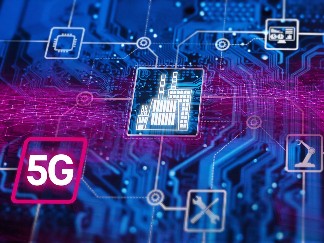
Automated home systems, often referred to as smart home technology, are rapidly evolving thanks to the capabilities of 5G technology. The high speed, low latency, and large device connectivity provided by 5G enhance
the functionality and reliability of smart home devices, making homes more efficient, secure, and convenient. Below are some key applications and benefits of integrating 5G technology into automated home systems:








### 1. **Enhanced Device Connectivity**
– **Seamless Integration:** 5G can support a vast number of devices simultaneously, allowing homeowners to connect multiple smart devices (thermostats, lights, security cameras, appliances) without worrying about network congestion.
– **Improved Interoperability:** Devices from different manufacturers can communicate more effectively, creating a more unified smart home ecosystem.
### 2. **Real-Time Control and Automation**
– **Instantaneous Response:** With 5G’s low latency, users can control their devices in real-time. For example, adjustments to lighting or climate can occur almost instantaneously upon user command.
– **Smart Schedules and Automations:** Homeowners can set up automated routines that adjust lighting, temperature, or security systems based on time of day or occupancy, enhancing convenience and energy efficiency.
### 3. **Advanced Security Systems**
– **Smart Surveillance Cameras:** 5G enables high-definition video feeds from security cameras, allowing for real-time monitoring from anywhere in the world. These cameras can send alerts immediately when unusual activity is detected.
– **Remote Access Control:** Homeowners can manage locks and access control systems remotely. For instance, they can grant temporary access to visitors or service personnel without being at home.
### 4. **Home Energy Management**
– **Smart Thermostats:** 5G-enabled smart thermostats can learn patterns of usage and adjust heating and cooling systems accordingly, remotely accessible for optimal energy savings.
– **Energy Consumption Monitoring:** Homeowners can receive real-time insights into energy usage through connected devices, enabling them to make informed decisions about reducing consumption or shifting usage patterns.
### 5. **Health and Wellness Monitoring**
– **Wearable Devices Integration:** 5G allows smart health devices to update health and wellness data in real-time, monitoring vital signs and providing alerts for any abnormalities.
– **AI-Enhanced Home Environments:** Smart devices can be integrated with AI to assess air quality, humidity, and temperature, adjusting to ensure a healthy living environment.
### 6. **Voice and AI Assistants**
– **Responsive Voice Commands:** 5G allows voice-activated assistants (e.g., Amazon Alexa, Google Assistant) to respond faster and control multiple devices with complex commands.
– **Home Automation through AI Learning:** Systems can adapt to user behavior over time, optimizing settings to match preferences without requiring manual adjustments.
### 7. **Smart Appliances**
– **Connected Kitchen Devices:** Ovens, refrigerators, and washing machines can be monitored and controlled via 5G, enabling features such as remote preheating or notifications when cycles are completed.
– **Inventory Management:** Smart fridges can track contents and expiration dates, sending alerts or creating grocery lists, providing updates even while away from home.
### 8. **Enhanced Entertainment Systems**
– **High-Quality Streaming:** With 5G, users can stream 4K and 8K videos seamlessly throughout their home, even on multiple devices simultaneously.
– **Multi-Room Audio Systems:** Synchronizing music playback across different rooms without lag becomes feasible with the increased bandwidth of 5G.
### 9. **Automated Gardening and Outdoor Management**
– **Smart Irrigation Systems:** Homeowners can automate watering schedules based on real-time weather data and soil moisture levels, optimizing water use while maintaining gardens.
– **Outdoor Cameras and Sensors:** 5G connectivity allows for outdoor cameras and sensors to provide alerts for movement, assisting in home security and monitoring outdoor conditions.
### 10. **Integration with Smart City Infrastructure**
– **Unified Smart Home and City Ecosystems:** As cities become smarter, 5G will enable better integration between home systems and municipal services (like traffic management or emergency alerts), providing residents with real-time information affecting their daily lives.
### Conclusion
Integrating 5G technology into automated home systems transforms everyday living by enhancing connectivity, control, and monitoring capabilities. This results in increased convenience, improved energy efficiency, enhanced security, and better overall quality of life. As 5G continues to become more widespread, the possibilities for smart home innovations will expand, paving the way for increasingly sophisticated and responsive living environments. The result is a smarter, more connected home that can adapt to the needs of its inhabitants in real time.


Leave a Reply